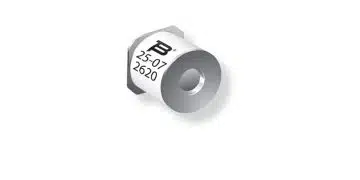This paper Graphene-Based Bank Of Supercapacitor Cells (BOSC) From Electrode To System Level was presented by Dorela Hoxha, Pleione Energy S.A. Greece during the 5th Space Passive Component Days (SPCD), an International Symposium held from October 15th to 18th, 2024, at ESA/ESTEC in Noordwijk, the Netherlands. Published under permission from ESA SPCD organizers.
Introduction
The article explores advancements in energy storage technologies, focusing on the development of graphene-based bank of supercapacitor cells (BOSC) from electrode to system level.
Conducted under the supervision of the European Space Agency (ESA), Pleione Energy spearheaded this project to enhance the specific energy and power density of supercapacitors, aiming for applications in aerospace and other high-demand sectors.
Key Points
- Graphene’s Role: Explores graphene’s superior properties—high conductivity, large surface area, and mechanical strength—that improve energy storage devices.
- Development Process: Details on material optimization, electrode design, manufacturing of supercapacitor cells, and BOSC assembly.
- Application Scope: Highlights potential uses in electric vehicles, energy harvesting systems, and space missions.
- Experimental Results: Presents electrochemical performance, mechanical resilience, and lifecycle stability of the developed supercapacitors.
- Future Directions: Suggests enhancements for efficiency, capacitance, and durability at both cell and system levels.
Extended Summary
Recent technological strides in energy storage are pivotal for space applications, where high energy density and robust performance are critical. Supercapacitors have emerged as key players due to their rapid charge-discharge capabilities and longevity. This research delves into leveraging graphene to push the boundaries of supercapacitor efficiency.
The project commenced with the development of graphene-based electrodes using a scalable roll-to-roll method. The graphene’s high conductivity and surface area significantly contributed to enhanced capacitance, reaching values beyond 100F. Electrodes underwent rigorous testing, including morphological analyses via SEM and electrochemical evaluations through cyclic voltammetry.
Building on the electrode success, researchers assembled supercapacitor cells, achieving average capacitance of 160F. These cells exhibited strong performance in electrochemical tests, including charge-discharge cycles, leakage current assessments, and self-discharge analysis. Mechanical integrity was validated through vibration and shock tests, confirming their resilience under extreme conditions.
The culmination of this development was the BOSC prototype, designed to meet specific ESA and Large System Integrators (LSIs) requirements. Comprising six supercapacitor cells in series, the BOSC demonstrated a capacitance of 20.8F during initial charge-discharge cycles with strong operational stability. However, high-current testing revealed challenges such as cell swelling and capacitance degradation, attributed to electrolyte volatilization. Despite these issues, the BOSC maintained mechanical robustness and promising energy efficiency.
Conclusion
The successful development of graphene-based supercapacitor banks marks a significant milestone in energy storage technology.
The research highlighted graphene’s potential to improve energy and power densities, making supercapacitors viable for demanding applications, including aerospace. Future efforts will focus on optimizing electrode coatings, transitioning to cylindrical cell designs, and refining system integration to enhance performance, reduce resistive losses, and improve durability.
Read the full paper:
































